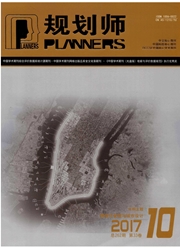
欢迎您!东篱公司
退出

 中文摘要:
中文摘要:
在我国快速城镇化进程中,居住用地的无序扩张现象日益明显。城市居住空间的过度增长、人口和居住用地的不协调发展,压缩了城市未来的发展用地,加剧了本来就存在的人地矛盾。文章以长沙市为例,运用长沙市第五、第六次人口普查数据,以及长沙市2000年、2010年土地利用现状的有关数据,计算了街道(镇)一级的人口—居住用地协调系数,并进行协调程度分析;在此基础上,根据人口、居住的特征数据,进一步运用SPSS系统聚类分析法对街道(镇)进行聚类,并对聚类结果进行分析,提出相应的人口与居住用地协调性改进建议及对策。
 英文摘要:
英文摘要:
Disordered overgrowth of residential land, and imbalance between population and residential land, have exacerbated the human-land contradiction in the process of fast urbanization. The paper uses the data of fifth and sixth population census, and Changsha land use in 2000 and 2010, calculates population-residential land coordination index, conducts SPSS cluster analysis of population and residence, and puts forwards improvement suggestions.
 同期刊论文项目
同期刊论文项目
 同项目期刊论文
同项目期刊论文
 期刊信息
期刊信息
